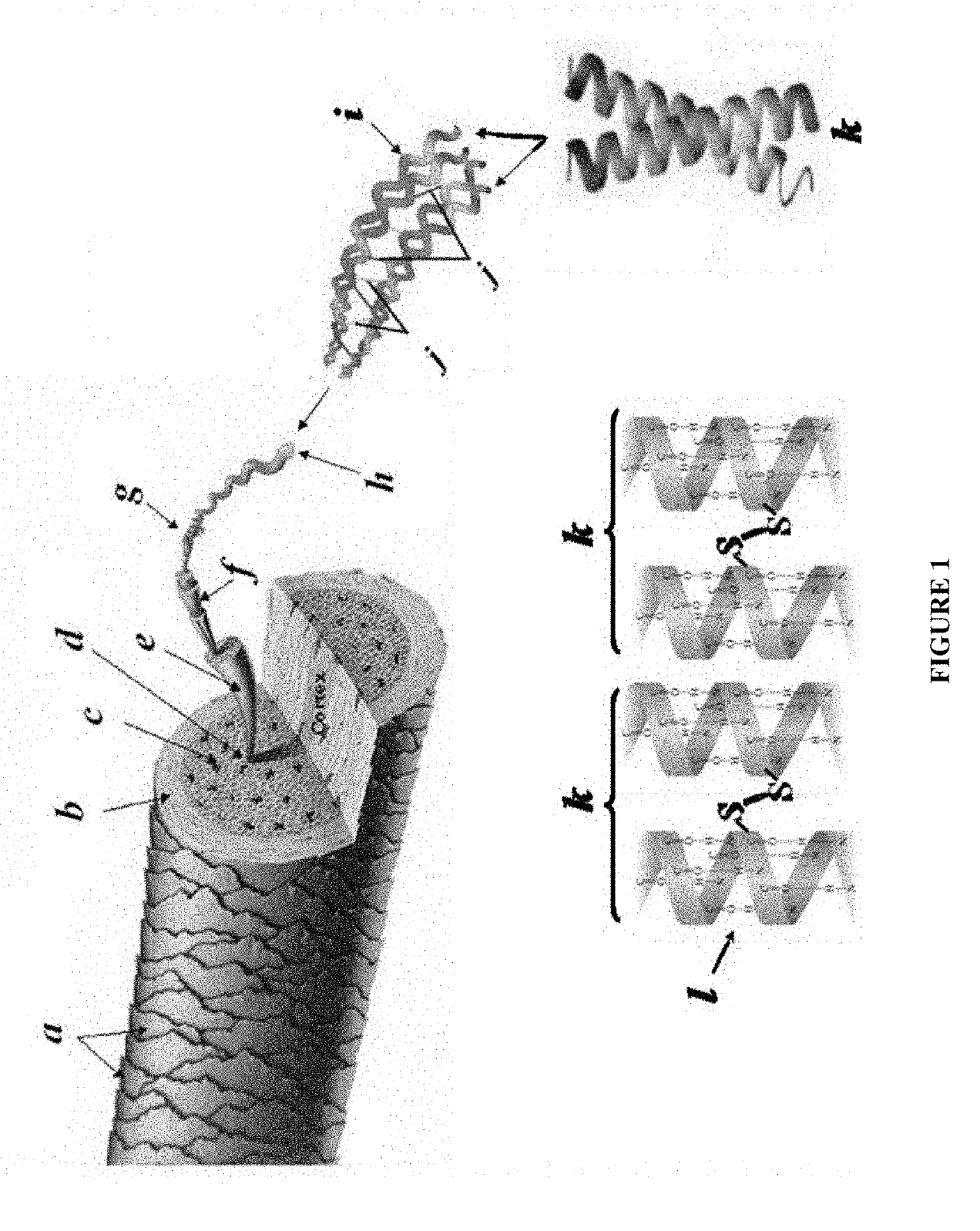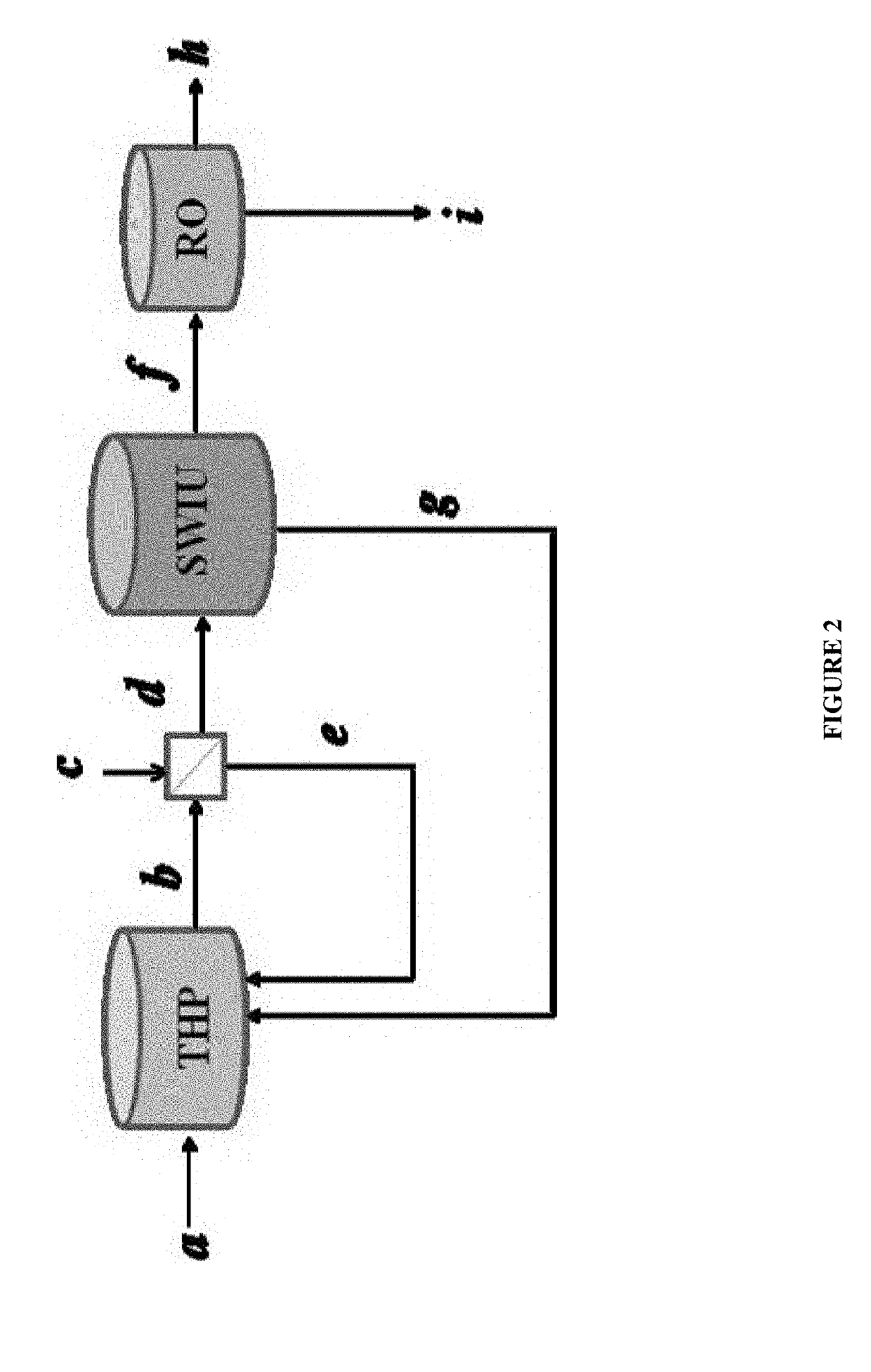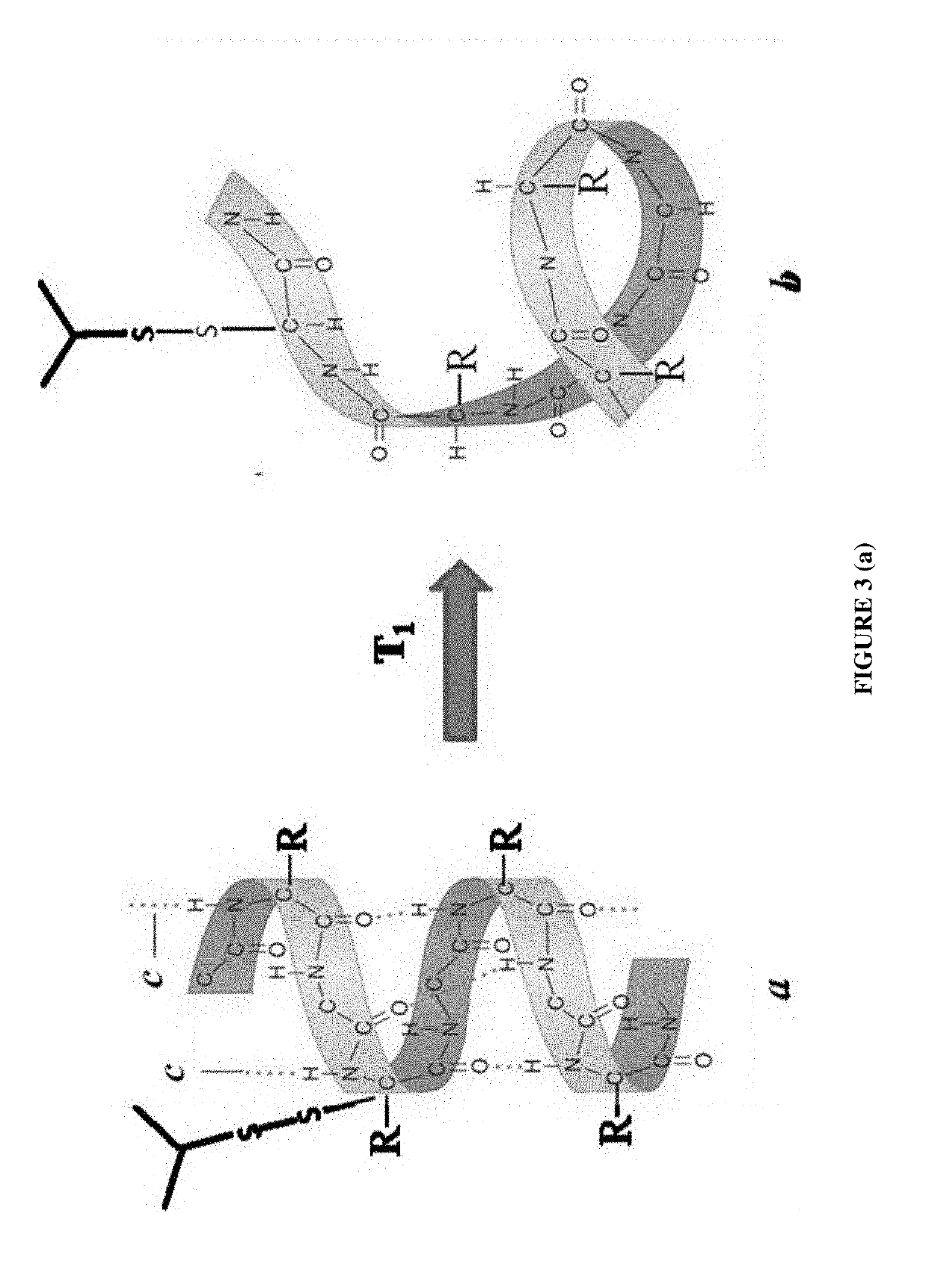Process to extract and recover keratin and keratin associated protein from animal body parts
a technology of animal body parts and keratin, which is applied in the direction of proteins, prostheses, peptide/protein ingredients, etc., can solve the problems of poor digestibility of feed, difficult degradation of kabp, environmental concerns, etc., and achieve the effect of increasing the concentration of protein or khs
- Summary
- Abstract
- Description
- Claims
- Application Information
AI Technical Summary
Benefits of technology
Problems solved by technology
Method used
Image
Examples
example 1
[0081]Hog hairs collected at a rendering plant were used as the sample for KABP. Hog hairs used for the experiments were cleaned as follows: hog hairs (100 g) were immersed in a solution which was composed of 10 liters of water containing 5% (w / v) of a non-ionic detergent. The solution was stirred for 12 hrs after which the hog hair was removed from the solution. The hog hair was washed by water and then immersed in water only and the solution was stirred for 2 hrs for rinsing after which the hog hair was removed from the solution and placed on an oven at 50° C. overnight. This sample was used for all examples described herein.
[0082]A portion of the washed and dried hog hair was set aside for the composition analysis. To prepare a sample, the hair was first cut into small pieces and ground by a pestle. Table 1 lists the composition of the hog hair sample analyzed by the combustion method.
TABLE 1Protein (%)Ash (%)Lipid (%)Others (%)95.80.58>3.37
As is shown in Table 1 above, the hog h...
example 2
[0087]FIG. 5 compares the recovery yield between the two-step process and the one-step process described herein. The recovery yield of the one-step process, either d or c, is approximately half the recovery yield of the two-step process. This further demonstrates the effectiveness of the two-step process as described herein.
EXAMPLE 3
[0088]Two key characteristics are at least required for keratin used in cosmetics: a wide range of MW distribution and the adequate cysteine residue content which is used to cross-link between two α-helices through disulfide bonds for hair restoration. Two sample are chosen herein from the market for a comparison with the keratin hydrolysate of the present invention: one is FK Restore™ by Keraplast Technologies, LLC and Keratin Protein by MakingCosmetics®, both of which are already commercially available as keratin-based hair-care products. Keraplast Technologies is known to use at least two processes: sulfitolysis followed by an enzymatic process and an...
example 3
[0095]We characterized the COWT® hydrolystate for feed applications. We use OKLP™ by Keraplast Technologies, which is already in the market, for comparison of the characteristics.
[0096]Silk et al. have reported that peptides with five or fewer AA residues are absorbed with higher efficiency than larger peptides (Silk, et al., 1985). It appears that a favorable range of MW for digestible protein feeds may be between free AAs and peptides with five amino-acid residues. In terms of MW, this range falls between about 75 Da and 1,020 Da. 75 Da is the MW of glycine, the smallest AA, while 1,020 Da is the MW of a pentamer of tryptophan, the largest AA residue. On the other hand, the MW of keratin in animal hair can be as high as 65 KDa or higher (Nakamura, et al., 2002). The higher the MW of protein hydrolysates, the more difficult it is to digest by an animal in general.
[0097]FIG. 8(a) displays the MALDI-TOF-Mass spectroscopy for OKLP™ by Keraplast Technologies. No visible peak above 1,00...
PUM
| Property | Measurement | Unit |
|---|---|---|
| Fraction | aaaaa | aaaaa |
| Fraction | aaaaa | aaaaa |
| Time | aaaaa | aaaaa |
Abstract
Description
Claims
Application Information
 Login to View More
Login to View More - R&D
- Intellectual Property
- Life Sciences
- Materials
- Tech Scout
- Unparalleled Data Quality
- Higher Quality Content
- 60% Fewer Hallucinations
Browse by: Latest US Patents, China's latest patents, Technical Efficacy Thesaurus, Application Domain, Technology Topic, Popular Technical Reports.
© 2025 PatSnap. All rights reserved.Legal|Privacy policy|Modern Slavery Act Transparency Statement|Sitemap|About US| Contact US: help@patsnap.com



